What is Digital Dentistry?
Digital dentistry is on the rise. Learn how your practice can stay competitive and go digital with Dandy.
Take some time to learn more about taking your practice digital with the nations first and only digital dental lab.
The state of digital dentistry in the U.S.
The digital dentistry revolution is here. Nearly 50% of the dentists in the United States currently use digital intraoral scanners. However 22% dentists across the country do not plan to transition from analog to a digital IOS in the next 3 years.
A deeper understanding around how digital dentistry and workflows function can help even the most digitally-skeptic dentists see the significant potential value of these innovative technologies for their practice.
What is digital dentistry?
Digital dentistry is an expansive term for all technologies and devices utilizing software, hardware, or other computational components to examine, diagnose, and treat patients more quickly and effectively than the analog, mechanical or electrical options previously available. Digital dentistry does not change the process for dental restoration procedures. Merely, it adds efficiency to the process of taking impressions, treatment planning, and allows for more accurate diagnoses.
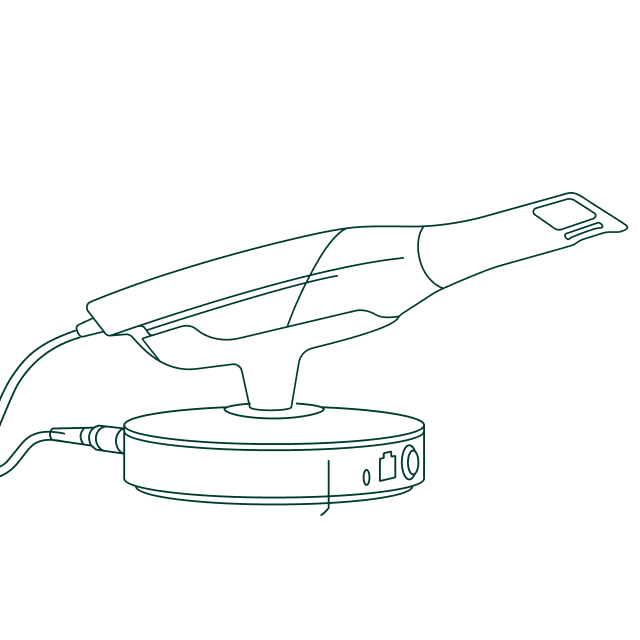
Practices who adopt digital dentistry with Dandy see:
A digital dentistry partnership with Dandy
Start with a free intraoral scanner
Democratizing digital dentistry starts with making digital dental technology accessible. When you sign on with Dandy, you receive a free 3Shape TRIOS intraoral scanner, saving your practice an immediate $30k investment.
Intraoral scanners allow you to capture the exact anatomy of your patient’s teeth and jaw and instantaneously share it visually with both patient and lab—which can be especially helpful for complex procedures such as dental implant placement or orthodontic treatment.
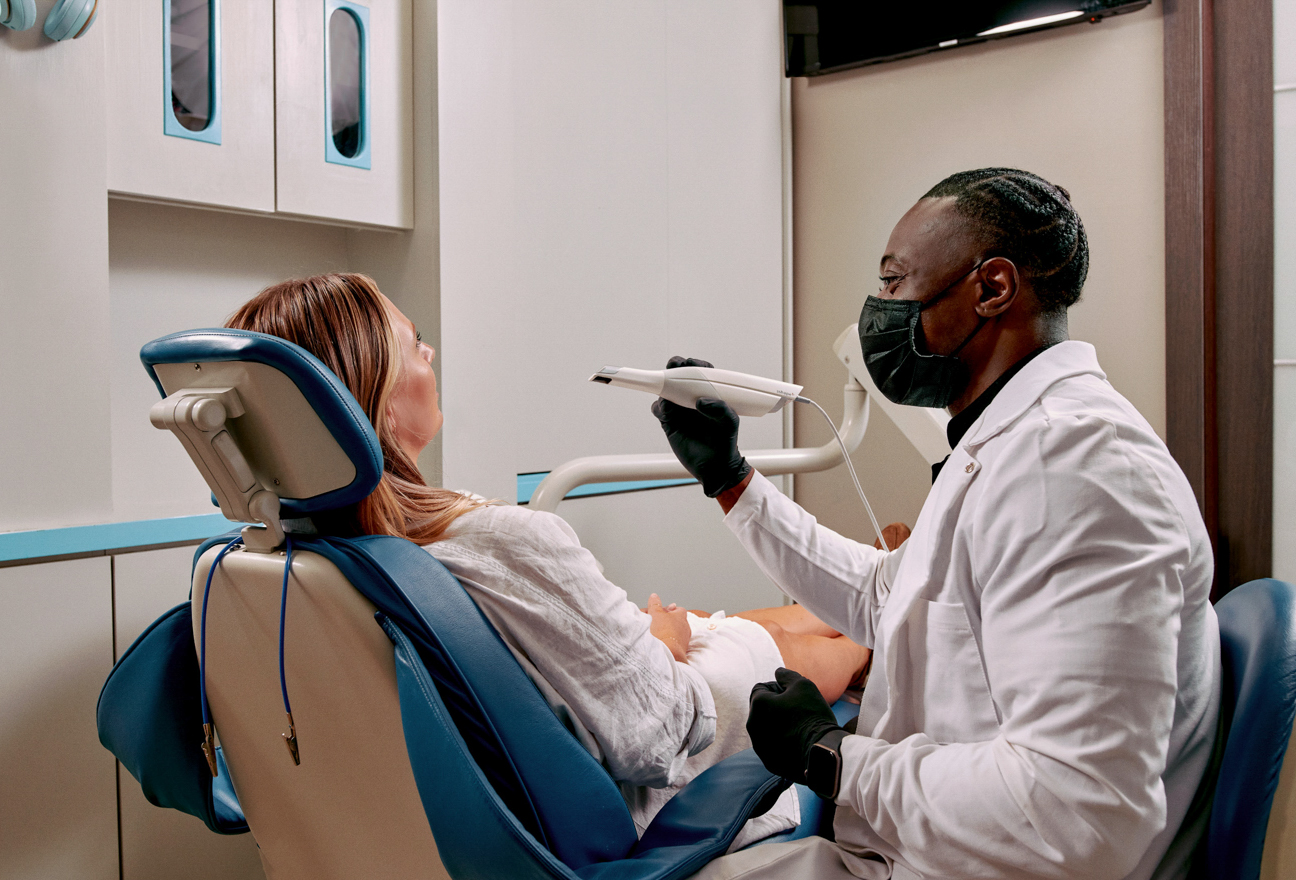
The History of Intraoral Scanning
Digital scanning was first introduced in 1985 with the CEREC, the first commercially available digital impressioning system. When paired with CAD/CAM milling technology, the CEREC enabled the production of chairside ceramic restorations—pioneering the digital scanning and sophisticated restorations systems we know today. Like other digital technologies—computers, phones, tablets—intraoral scanners have gone through numerous iterations over the years, advancing from 2D black and white scans to full arch 3D scans in under 60 seconds. Today, over 40 intraoral scanners are available on the market, with brands such as iTero scanners, Medit scanners, and 3Shape scanners leading the pack.
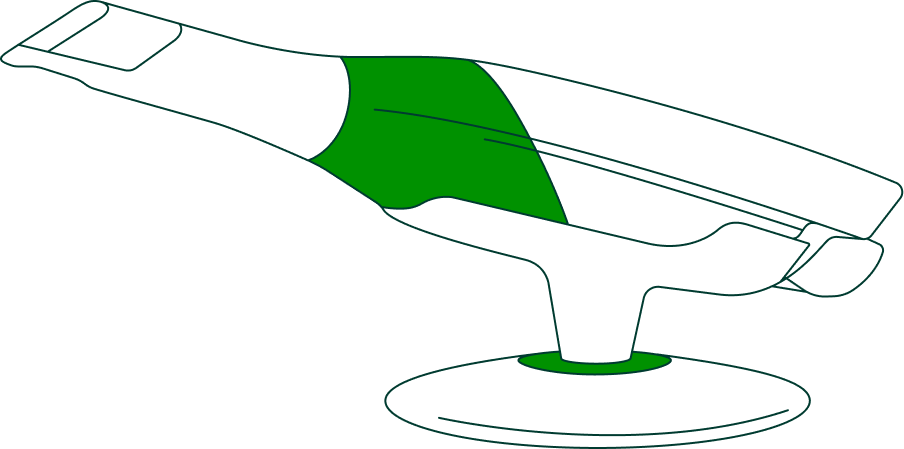
Get free digital dentistry training
Dandy is committed to ensuring your practice’s success with digital dentistry. We’ll start you off right: In the 3 hours it would take for you to participate in a CE credited course, your entire team could be trained by Dandy on how to take accurate digital impressions with an intraoral scanner. And you’ll receive a CE credit for Dandy’s training as well.
Training is an important step to becoming familiar with the new technologies and techniques involved in digital dentistry. When you work with Dandy, you are provided free, comprehensive scanning and workflow training for your entire staff.
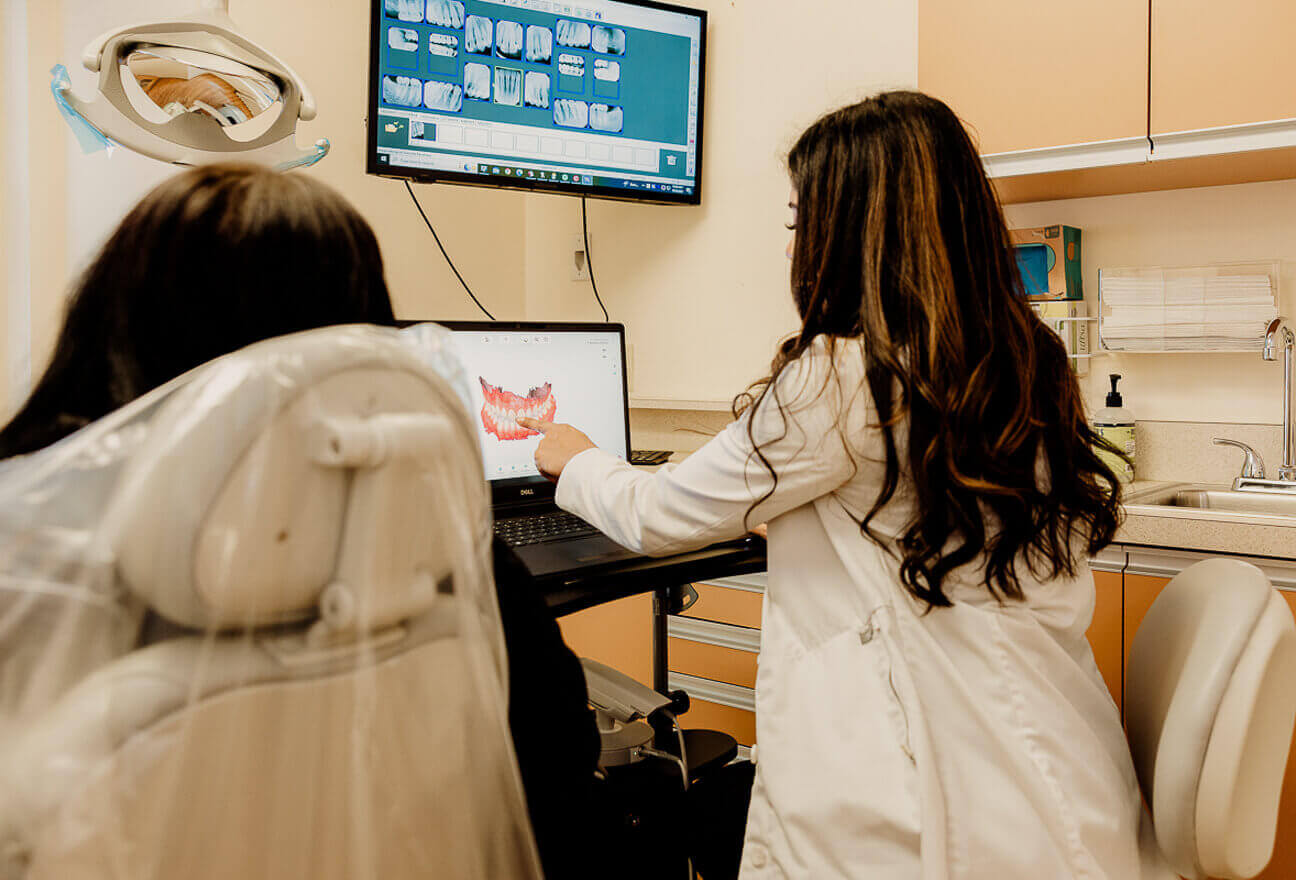
Digital Dentistry and CAD/CAM Technology
CAD/CAM dentistry is a critical part of the digital lab process, allowing dentists to create complex, accurate restorations quickly and efficiently. Both dental practices and labs use software with CAD/ CAM technology to produce digital night guards, dentures, crowns, bridges, inlays, veneers, and aligner scans to construct an accurate quality product made from high-strength materials.
The digital production method requires less time and effort than traditional lab processes — and can take as little as 45 minutes to a couple of hours, depending on the complexity of the case.
The CAD/CAM process uses an intraoral scanner to digitally create a custom 3D image of the patient’s teeth and gums. Lab technicians and dental professionals use this imaging to design the final restoration.
Next, a milling machine shapes the restoration from a single ceramic block. The restoration is then stained or glazed to appear natural, polished for a final finish, and is immediately ready to be placed.
Always-on support
We don’t just end training and say, “Good luck!” We will be with you every step of the way on your digital dentistry workflows from your first few scans to your 5,000th (and past that number, now that you have a more efficiency in your dental practice). Partnering with Dandy comes with a promise that we will always be there to support you.
Ongoing clinical and technical support includes:
- Live chat support
- Phone support
- Live scan reviews
- Chairside case reviews

Advances in dentistry technology
Dandy’s proprietary digital dentistry software makes it easy for you to scan, order, and track all of your cases whether you’re chairside, at your desk, or on the go. It’s as easy as placing an Amazon order and following it—only better as your whole office staff, not just the person who placed the order, will be able to track in real-time!
- Chairside software: The easiest way to scan patients and submit orders.
- Portal software: Check case statuses, approve wax-ups, chat with your expert lab team, and much more.
- Mobile app: Manage and track your lab cases from anywhere. All the benefits of the Portal, on the go.
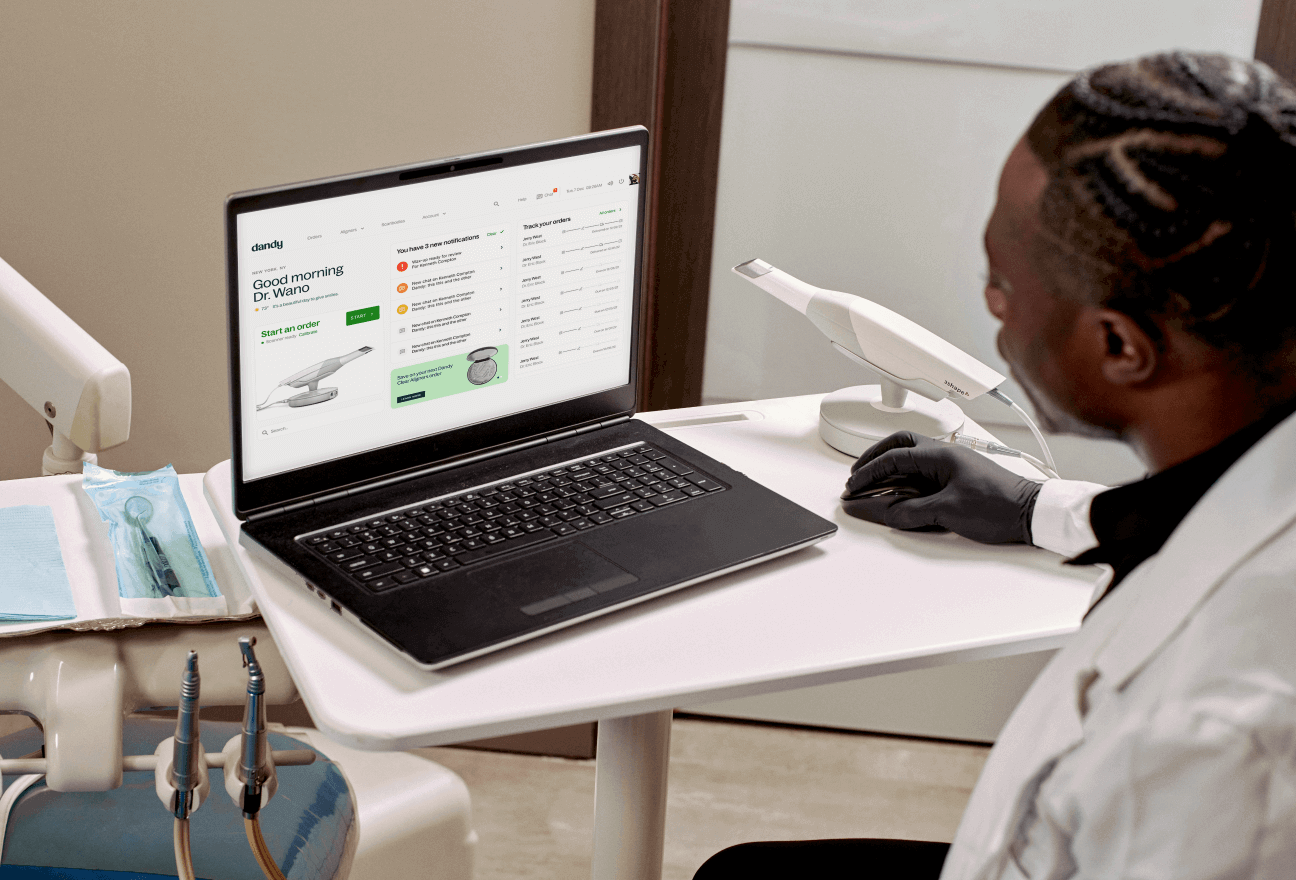
Dentist Adopting Digital Dentistry:
Definitive guide to digital dentistry
In an effort to empower dentists and practices to learn digital dentistry workflows, learn more about digital impressions in dentistry, and more we’ve put together this definitive guide to digital dentistry.
This free downloadable e-book addresses the most common questions and important factors when transitioning to digital.
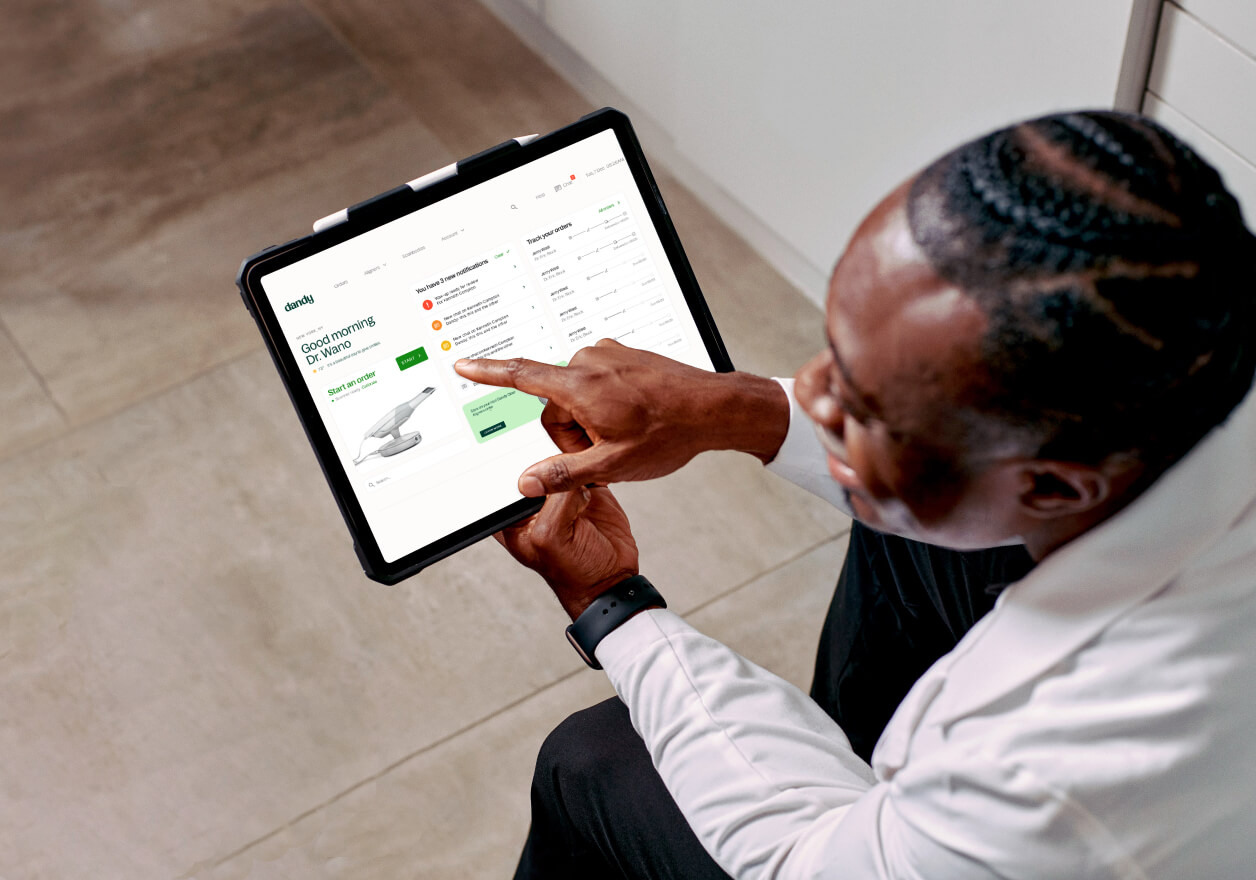
Let’s take your practice digital
Reduce costs, grow your profits, and delight your patients with digital dentistry. Let’s get started today!
Take some time to learn more about taking your practice digital with the nations first and only digital dental lab.
Frequently asked questions about Digital Dentistry
Digital dentistry is an expansive term for all technologies and devices utilizing software, hardware, or other computational components to examine, diagnose, and treat patients quickly and effectively. Previously, dentists would use analog or mechanical processes, specifically in taking impressions and performing complex restorations.
The term ‘digital dentistry,’ however, most often refers to intraoral scanning, 3D printing, and milling technologies; an area of dentistry in which digital has rapidly become the industry standard, transforming a messy, complex, and, delicate aspect of dental care into a streamlined process with highly accurate results.
The top 5 benefits of digital dentistry, according to practicing dentists are:
- Accuracy and efficiency: Intraoral scanners allow dentists to eliminate various steps when doing impressions, allowing you to achieve faster turnaround times—making your practice (and business) more efficient.Improved visualization accuracy leads to more consistent restorations, with fewer chairside adjustments or costly re-dos. And without needing to order trays and PVS supplies, there is less operational burden, as well as money saved on impression materials.
- An elevated patient experience: Patients are increasingly seeking dental practices that are more tech-forward. They want faster appointments, more comfortable impressions, and a shorter turnaround time for restorations.
- Visuals enhance case acceptance: If patients can see and understand what is happening in their mouths, with their teeth and gums, they will be more likely to be invested in finding and accepting treatment.
- Sustainability: Digital dental scanning is more sustainable than taking traditional PVS impressions. No more trays, PVS, and other materials – not to mention less of an overhead burden for your practice.
- Exponential benefits of modernization: Adopting digital workflows can make your practice more attractive for talent acquisition and retention, and you’ll reap the benefits from increased patient referrals.
Traditional vs digital dentistry generally refers to the method in which dentists are taking impressions of patients teeth. Traditional dentistry refers to analog impressions, using stock trays and impression materials to take molds of patients mouths. This method of taking impressions is laborious, error-prone, and can be time-intensive for complex cases. Digital dentistry refers to the use of dental scanners or intraoral scanners to take a 3D model of their patients mouths.
Digital impressions are a computerized mold of the patients mouth created by a piece of equipment known as an intraoral scanner. The intraoral scanner records the size and shape of each tooth automatically, instantly combining retrieved data into a 3D rendering of the patient’s mouth that’s then visible on a monitor.
CAD/CAM software is used to design and manufacture prototypes and finished products. For decades, the manufacturing industry has been using computer-aided design (CAD) and computer-aided manufacturing (CAM) to create a variety of tools, parts, and even automobiles. The field of dentistry first adopted this technology in 1985, which has revolutionized the production of dental restorations and prostheses. Since its early years, CAD/CAM technology has advanced significantly, providing immense benefits to dental professionals and patients alike.
CAD/CAM dentistry is a critical part of the digital lab process, allowing dentists to create complex, accurate restorations quickly and efficiently. Both dental practices and labs use software with CAD/ CAM technology to produce digital night guards, dentures, crowns, bridges, inlays, veneers, and aligner scans to construct an accurate quality product made from high-strength materials.
The CAD/CAM process uses an intraoral scanner to digitally create a custom 3D image of the patient’s teeth and gums. Lab technicians and dental professionals use this imaging to design the final restoration. Next, a milling machine shapes the restoration from a single ceramic block. The restoration is then stained or glazed to appear natural, polished for a final finish, and is immediately ready to be placed.